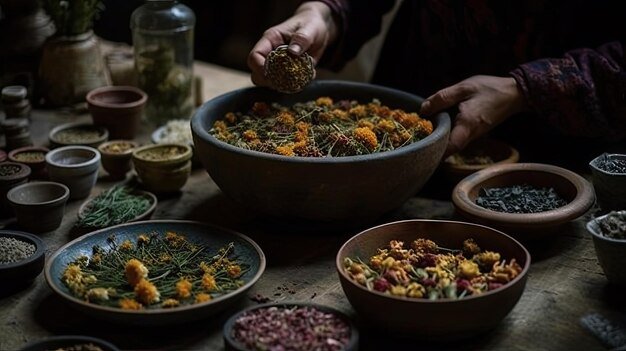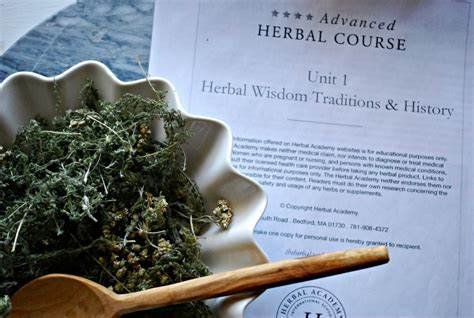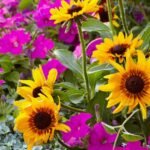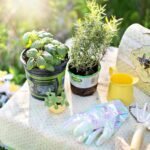How Herbalists Preserve Traditional Knowledge
Herbal medicine has been an integral part of human culture for centuries, providing natural remedies for a wide range of ailments. While modern medicine has advanced, traditional knowledge of herbs remains invaluable for maintaining health, particularly in indigenous cultures and holistic healing practices. But how do herbalists preserve and pass down this vast reservoir of wisdom? Here are some key ways that this knowledge is safeguarded and shared across generations.
1. Oral Tradition
One of the oldest methods for preserving herbal knowledge is through oral tradition. Elders and experienced herbalists pass down knowledge verbally, sharing stories, remedies, and plant properties with younger generations. This oral transmission of information fosters a deep, personal connection with the plants and their uses, creating a living tradition that evolves with each new generation.
- Role in Preservation: Oral history allows for the transmission of localized, cultural knowledge about plants and healing methods that may not be written down. It ensures that herbal remedies are passed on in context, with the stories behind them, and the relationships between the plants and the people who use them.
2. Written Records and Herbals
In addition to oral tradition, herbalists also preserve their knowledge in written records. This includes herbals, botanical guides, and journals, where herbalists document the properties, uses, and preparation methods for various plants. These texts have been passed down through generations and continue to serve as a valuable resource for herbalists and students of herbal medicine.
- Role in Preservation: Written records, such as herbals, scientific research papers, and medicinal plant guides, provide a more permanent and standardized way to preserve knowledge. They help prevent the loss of valuable medicinal information and ensure accessibility for future generations.
3. Herbal Apprenticeships
Herbalists often learn the craft through apprenticeships, working alongside experienced practitioners who guide them in identifying plants, preparing remedies, and understanding the nuances of herbal medicine. This hands-on learning approach ensures that the knowledge is passed down in a practical, experiential manner.
- Role in Preservation: Apprenticeships create a direct, personal transmission of knowledge between the teacher and apprentice, with a focus on the practical application of herbs. This method ensures that the herbalist is trained in real-world settings, learning how to interact with plants and nature in ways that cannot be captured in books.
4. Cultural Ceremonies and Rituals
In many cultures, traditional herbal knowledge is passed on through ceremonies and rituals, where plants play a central role in healing and spiritual practices. For example, some indigenous cultures use plants in religious ceremonies, rites of passage, and community healing sessions. These practices are a way of connecting the community with plants and passing on sacred knowledge.
- Role in Preservation: Ceremonies and rituals help to reinforce the cultural significance of plants and their role in the community’s well-being. They make the knowledge sacred and integral to the cultural identity, ensuring that younger generations continue to honor and use the plants in the same way.

5. Modern Technology and Digital Platforms
In recent years, technology has provided new ways to preserve and share herbal knowledge. Online platforms, databases, and social media enable herbalists to connect with each other and with a wider audience. Digital herbals, instructional videos, and online courses allow people to access and learn about herbal medicine in a convenient and modern format.
- Role in Preservation: Digital platforms have made herbal knowledge more accessible to people around the world, breaking down geographical barriers. These platforms help preserve traditional knowledge in a modern context and ensure that it is available to both herbal practitioners and the general public.
6. Seed Saving and Cultivation
Herbalists also preserve traditional knowledge by cultivating and conserving medicinal plants. Through seed saving and sustainable farming practices, they ensure that the plants are available for future generations. Many herbalists grow plants in gardens or natural reserves, maintaining genetic diversity and preserving important species for medicinal use.
- Role in Preservation: By saving seeds and cultivating plants in a sustainable manner, herbalists maintain the biodiversity of medicinal species. This not only ensures the continued availability of these plants but also safeguards traditional healing methods that rely on them.
7. Community Herbal Networks
Herbalists often form networks within their communities, where they share knowledge, resources, and experiences. These networks may include local herbal associations, cooperatives, or informal groups where members trade plants, remedies, and advice. By fostering a sense of community, these networks ensure that traditional herbal knowledge is kept alive and shared among like-minded individuals.
- Role in Preservation: These networks create a support system for herbalists, ensuring that knowledge is continuously passed on. They also provide a space for collaboration and innovation, blending traditional wisdom with modern practices.
Conclusion
The preservation of traditional herbal knowledge is essential for maintaining cultural heritage and providing natural healing options for future generations. Through oral tradition, written records, apprenticeships, rituals, modern technology, and community networks, herbalists continue to pass down centuries-old wisdom about the healing power of plants. As we embrace these traditions, it’s important to recognize the value of preserving and sharing this knowledge to keep herbal medicine alive and thriving.



